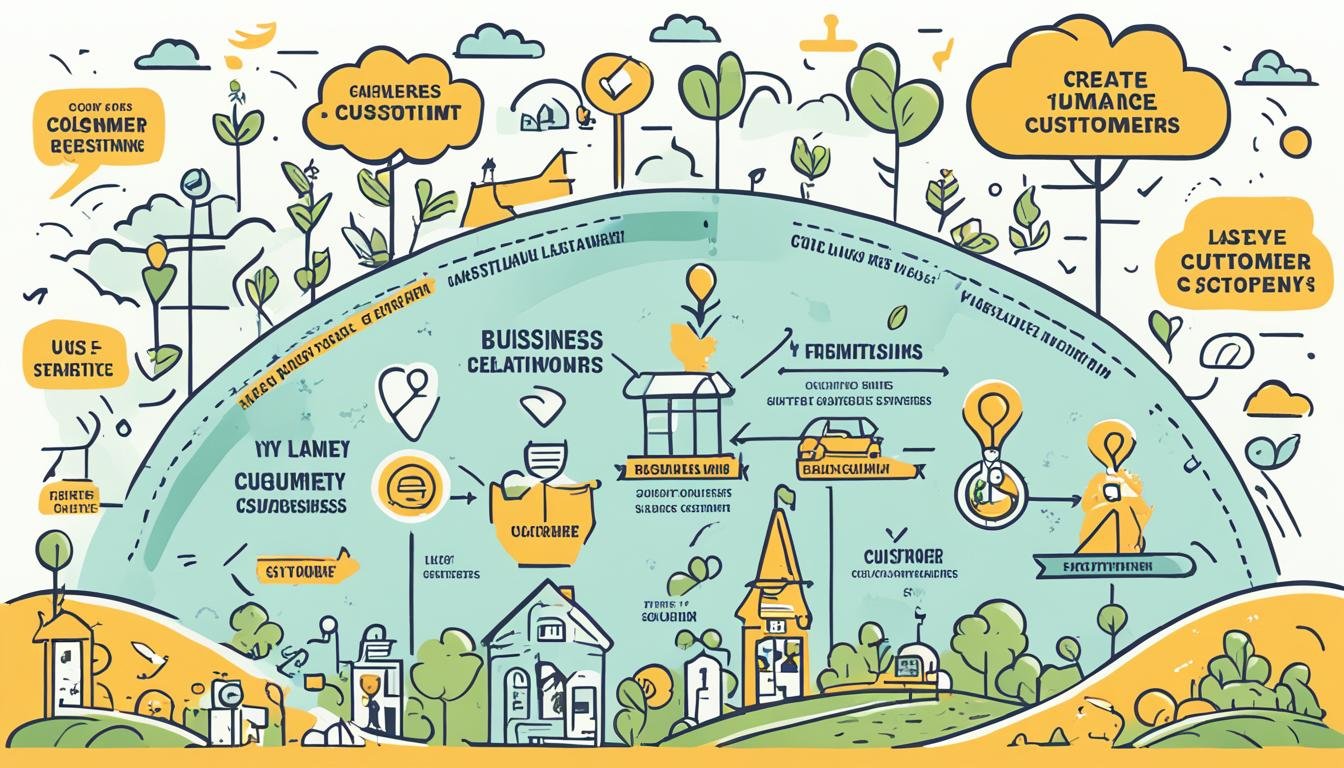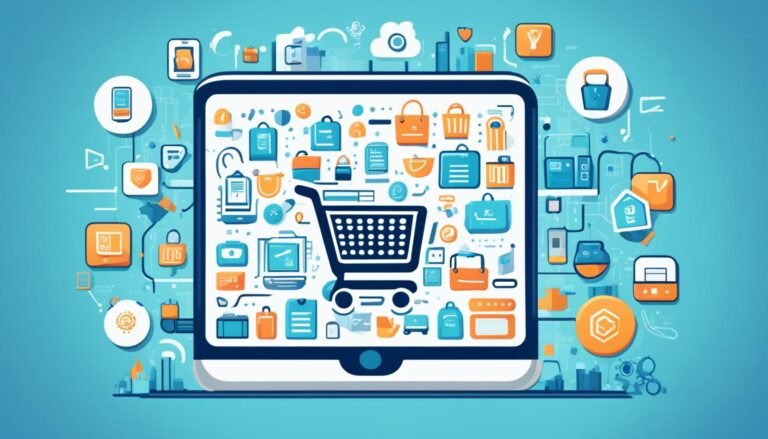Customer Lifetime Value (CLTV): Building Long-Term Relationships
In today’s fast-paced world, one key metric is changing the game for businesses: Customer Lifetime Value (CLTV). But what exactly is CLTV, and why is it so important for keeping customers around? Let’s dive into this powerful tool and see how it can help your business grow.
Key Takeaways
- Customer Lifetime Value (CLTV) measures the total net profit a company can expect from a customer over the entire relationship.
- Understanding CLTV helps make better choices on how to attract, keep, and engage customers.
- Calculating CLTV for different groups of customers helps make smarter business decisions, like product development and marketing.
- High CLTV means lower costs to get new customers and guides where to invest in the business.
- Using loyalty programs, upselling, and personalized messages can boost CLTV.
Understanding Customer Lifetime Value (CLTV)
Customer Lifetime Value (CLTV) is key for businesses to keep customers for a long time. It’s the total money a company can make from an average customer over their whole time with the company.
What is Customer Lifetime Value?
CLTV looks at things like how much it costs to get a customer, sales and marketing costs, and other expenses. By looking at these, companies can see how much their customers are really worth. This helps them make better choices to increase profits.
Importance of CLTV for Business Growth
Studies show that just a 5% increase in keeping customers can greatly increase profits. This shows how crucial it is to focus on making customers’ lifetime value better. Doing so is a big part of keeping a business successful and profitable over time.
“Increasing customer lifetime value (CLV) can increase revenue over time. CLV helps boost customer loyalty, reduce churn, and improve strategic decision-making.”
Knowing and improving CLTV helps businesses make smarter choices. They can use their resources better and create plans that keep customers happy for a long time.
Calculating Customer Lifetime Value
Understanding Customer Lifetime Value (CLV) is key to seeing the long-term worth and profit of your customer ties. This involves making smart guesses about things like average sale value, how often customers buy, and how long they stay with you. By looking at these, companies can make better choices and focus more on their customers.
Customer Lifetime Value Formula
The formula for Customer Lifetime Value is: Customer Lifetime Value = Customer Value × Average Customer Lifespan. First, figure out the customer value by multiplying the average value of a sale by the average number of transactions. Then, multiply that customer value by the average customer lifespan to get the customer lifetime value.
Customer Lifetime Value Example
Let’s say a customer’s average purchase value is $50 and they buy 3 times a year for 2 years. Their customer lifetime value would be $50 × 3 × 2 = $300.
“By understanding Customer Lifetime Value (CLV), organizations can tailor product offerings, engage in upselling and cross-selling, leading to increased revenue.”
Factors Influencing Customer Lifetime Value
Understanding what affects the customer lifetime value (CLV) is key. The Churn Rate, or how often customers stop buying from a business, can lower CLV. Building strong customer loyalty is vital. Loyal customers spread the word, helping the business grow and increasing CLV.
Having a good sales and marketing plan is also crucial. Growth in revenue should match these efforts to keep profits up and CLV high. To boost CLV, set clear goals, check the data, improve where needed, and keep an eye on CLV for smart decisions.
Churn Rate
A good onboarding process can help keep customers and raise CLV. Adding “sticky” features to products keeps customers engaged and stops them from leaving. This way, CLV goes up.
Customer Loyalty
Sharing knowledge through articles or tutorials helps customers see the value of products, leading to longer subscriptions. Rewards for loyal customers, like special features or discounts, build loyalty and increase CLV.
Scalable Sales and Marketing
Cross-selling and upselling can lift CLV by getting customers to buy more. Supporting customers and listening to their feedback builds strong relationships, raising CLV. Targeting the right customers with the right message leads to better retention and higher CLV.
“Having a scalable pricing structure based on value metrics ensures that customers at all levels find value in the product, contributing to increased CLV.”
Strategies to Increase Customer Lifetime Value (CLTV)
In today’s market, businesses need to focus on building strong relationships with customers for growth. By using smart strategies, companies can boost their Customer Lifetime Value (CLTV) and keep customers coming back. Let’s look at some key ways to do this.
Optimize Onboarding
The onboarding process sets the stage for a good customer-brand relationship. By making the onboarding better, businesses teach customers about the product’s value and how to use it best. This builds a strong base for ongoing engagement and more repeat business, raising CLTV.
Effective Communication
Good communication with customers is key to trust and a strong bond. Companies should quickly answer customer questions and concerns, showing they care about the customer experience. Using many communication channels, like live chat and knowledge bases, can make customers more engaged and loyal.
Loyalty Programs
Loyalty programs that reward repeat purchases, referrals, and engagement can greatly increase CLTV. These programs make customers feel special and give valuable insights into what their best customers like. This helps businesses offer better products and services.
Retargeting
Retargeting campaigns can bring back inactive customers and boost brand awareness. By showing ads to users who have interacted with the brand before, companies can keep building customer relationships. This leads to more purchases and a higher CLTV.
Using these strategies, businesses can grow their Customer Lifetime Value and build a loyal customer base. This leads to long-term growth and profits.
“Improving customer lifetime value is the key to sustainable business growth. It’s not just about getting new customers, but about keeping the ones you have.”
Customer Lifetime Value and Customer Retention
In the business world, Customer Lifetime Value (CLTV) and Customer Retention go hand in hand. The longer a customer stays with a business, the more value they become over time. To boost Customer Lifetime Value, companies can improve the onboarding process, keep in touch with customers, use loyalty programs, and target them again. These efforts help keep customers coming back.
By focusing on making customers happy and keeping them engaged, businesses can increase both Customer Lifetime Value and Customer Retention. This connection between these two key metrics is key to growing a business sustainably and making more money.
To figure out the Customer Lifetime Value, you need to look at how much each customer spends, how often they buy, and how long they stick around. For example, in the car industry, the Customer Lifetime Value could be in years because buying a car is a big decision.
By understanding what makes Customer Lifetime Value tick and working on it, companies can improve their customer relationships. They can also use their resources better to get and keep the most valuable customers.
Predictive vs. Historical Customer Lifetime Value Models
Businesses have two main ways to measure customer lifetime value (CLV): predictive and historical models. The predictive customer lifetime value method uses data to guess how much customers will buy in the future. It helps find the most valuable customers and keep them coming back.
The historical customer lifetime value method looks at past data to guess how much a customer is worth. It doesn’t guess if the customer will stay with the company. The choice between these models depends on what the business wants and how much customer data it has.
Predictive CLV models give a clearer picture of what customers might do in the future. They help businesses plan their marketing and keep customers. Historical CLV models are simpler but still useful for understanding past trends and guiding business decisions.
Using both predictive and historical CLV models together can give businesses a full view of their customers. This way, they can understand their customers better and plan for growth.
“To ensure profitability, SaaS businesses should maintain a Customer Lifetime Value (CLV) that is greater than three times the Customer Acquisition Cost (CAC).”
The Importance of Customer Behavior Forecasting and Data Analysis
Predictive customer behavior forecasting and customer data analysis are key in the predictive CLV model. By using past data and advanced analytics, businesses can spot patterns in how customers buy, leave, and behave. This helps predict future customer value and guide decisions on getting new customers, keeping them, and growing the business.
Choosing between predictive and historical CLV models depends on what the business needs and wants. By knowing the good and bad of each, companies can make a strong plan for measuring and improving their customer lifetime value.
Conclusion
Customer Lifetime Value (CLV) is key for businesses wanting to keep customers for a long time and grow steadily. By knowing what affects CLV, like how often customers leave and how loyal they are, companies can make better plans. They can use these plans to make more money from each customer over time.
Using strategies like making onboarding smoother, talking better with customers, and having loyalty programs can help. These actions can make customers more valuable over time and keep them coming back.
Putting a focus on CLV means giving customers great experiences and building strong relationships. This approach helps businesses grow, keep customers interested, and stay ahead in a changing market.
Improving Customer Lifetime Value is crucial for businesses aiming for long-term success and being leaders in their field. By always improving their focus on customers and using data well, companies can make the most of their customer relationships. This leads to steady growth and a strong edge over competitors.
Source Links
- What Is Customer Lifetime Value? The Complete Guide To CLV (2024) – Shopify
- Customer Lifetime Value 101
- What Is Customer Lifetime Value (LTV) and How to Calculate It? The Ultimate Guide
- How to Calculate Customer Lifetime Value (CLV) & Why It Matters
- Understanding Customer Lifetime Value (CLTV)
- Customer Lifetime Value: What Is It and How to Calculate
- Customer lifetime value (CLV): What it is + how to calculate it
- Customer lifetime value (CLV) explained: Formula + strategies for improving
- CLV: Customer Lifetime Value | CLTV Formula | Pipedrive
- What is customer lifetime value (CLV) and how to measure it?
- 16 Proven Tactics to Increase Your Customer Lifetime Value (CLV)
- 4 Effective Strategies to Boost Customer Lifetime Value
- Customer Acquisition Cost vs Lifetime Value: What’s the Difference?
- What is customer lifetime value (LTV)? | Stripe
- Customer Lifetime Value: Why It’s Key For SaaS Success
- Customer Lifetime Value: The Authoritative Guide [Updated for 2023] | Daasity
- What is Customer Lifetime Value (CLTV): Definition, Formula, and How to Use – Custify Blog
- ExactBuyer Blog
- Customer Lifetime Value: Returns’ Impact







